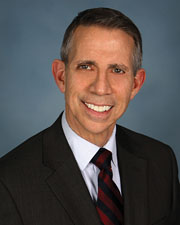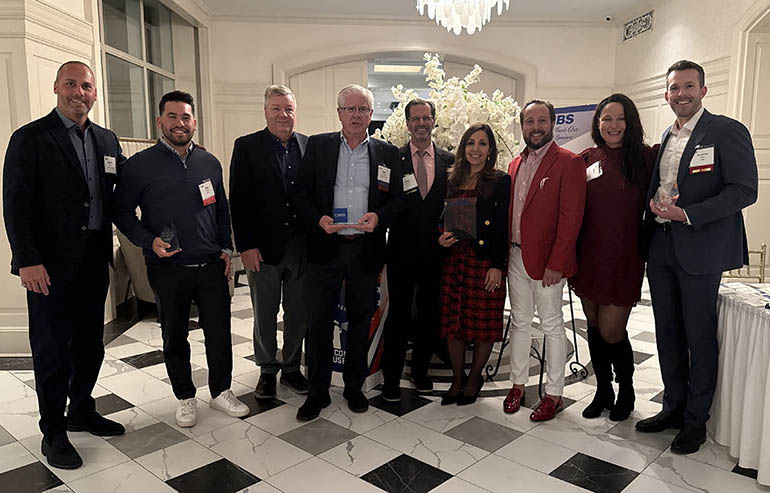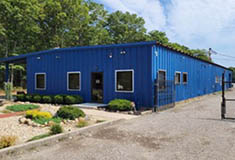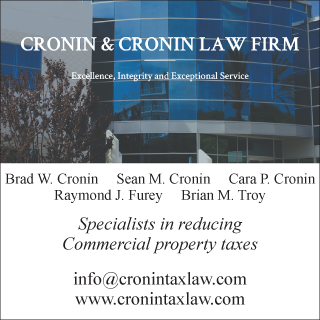News:
Long Island
Posted: May 13, 2013
Executive of the Month: Caban of the Long Island/Queens division at Winick, has a background in problem solving
Q: Why did you return to Winick Realty Group?
A: Winick Realty Group has one of the strongest regional reputations in the retail markets, both on the tenant side and the landlord side. They understand retail in all its many facets.
Winick Realty Group represents national, regional and local tenants, cultivating its business in many of the markets that others have only entered casually. Specifically, Jeff Winick's commitment to New York and the regional markets has been un-paralleled in every area of the business, including store expansions, client assignments, landlord representation and the identification of new and evolving markets. This is something I have seen over and over again. While many companies talk about representing landlords and tenants in emerging markets, Winick Realty Group actually makes the commitment in both capital and human resources to get job done. That is a company I want to be a part of.
Q: Why is now the right time to launch a Long Island division?
A: We follow our clients. If they tell us they want our brand of retail work in Long Island, we will be there. If they tell us they need our approach to representation and deal making in New Jersey, guess what? We're there. In my mind there isn't a right or a wrong time to do something, because this assumes that you don't have a business plan and a strategic approach to developing a market. We are already doing business in these markets; what we are looking to do is develop a systematic approach to getting our market brand to tenants and landlords out here. We have an exceptional brand—built over years of working with tenants and landlords—that carries weight in the market place.
Q: What value does the Winick Realty Group brand bring to the Long Island market? How is the approach associated with that brand similar and different as it is moved to a more regional market?
A: The value that the Winick Realty Group brand brings is leadership in some of the toughest and most competitive real estate markets in the United States. I have had the pleasure of working with brokers all over the United States, and what I found is that they typically don't get the New York and Tri-State markets. With the type of population densities we deal with and the variable changes in income and demographics that can exist in a market, sometimes block to block, it takes a sharp team of people to get it. Winick Realty Group gets it. We believe in the city as a changing tapestry. To that end, our people are constantly out there sourcing opportunities, and seeing where the next evolving neighborhoods will be. We talk to landlords about how their needs will changes years before other brokers have gotten to the market. We spot market holes and fill them in with tenants. That's what we deliver. This has been true time and time again in places like the Upper West Side, Dumbo, Williamsburg, Long Island City and many of the other markets we track and follow. That is the essence of the great brand, to deliver what it promises, is it not?
As for how that brand changes to accommodate urban and suburban markets, an urban brand in the city is used to built-in traffic drivers to deliver customers. As in many cases you are dealing with neighborhoods. In neighborhoods, we look at things like pedestrian traffic counts from public transportation, surrounding residential, hospitals, tenanted office buildings and key feeder streets. A typical demographic radius can take place within a 1/4, 1/2 mile, as densities in a markets can reach north of 50,000 plus per quarter mile. That is an enormous amount of people you can count on to visit your store. Other considerations will include the makeup of the population in a market: will they buy your product, or will they enjoy your food, if the preference is local. In suburban markets, a brand's consideration takes on a broader context. In these markets, depending upon the retail concept, we speak about car counts, surrounding daytime population, market competition, and a center's pull based on tenancies. Other customer drivers can be office population, surrounding residential communities, event spaces, public places, suburban train stops, ease of parking, ease of center access, stop lights, high density traffic intersections, or new developments coming to or in the market. Here we look at one-mile radii to determine our market demographics. You can see the flow here. The dialogue switches from pedestrian to vehicular traffic.
Q: What value do you specifically bring to retail leasing?
A: I started my career in the advertising business, working with great national brands. My background is in problem solving. A client wants to find a new niche in a crowded market, or create a new line of products to service and evolving trend, or shift the focus of an existing product or brand and find a new target audience. That is the nature of marketing. Those same skillsets and principles apply to retail real estate. After all, no one makes a capital commitment to open a store or to be in a market if their intent is not to increase market share. That is the basis for the work that I do. We study the markets; we track the competition, the customer and the traffics flows. When possible, we look at the sales of competitors, market comps, etc. We ask questions of customers, residents, and passersby, and then lay the groundwork for an approach. If our work is done correctly, it will match our clients and customers expectations and there should be no surprises. That is how I have serviced clients over the years.
Q: Why did you decide to focus your career on Long Island and the outer boroughs as opposed to Manhattan?
A: While I have done deals in Manhattan, I have found that my unique set of skills is well-suited for the diversity and expansiveness outside of Manhattan. I happen to enjoy looking at a piece of raw land and understand its potential, or looking at a warehouse and seeing how we can make a hotel or a big box development out of it. Or looking at an old gas station and figuring out that with a little focus and patience, the zoning could be changed and the piece can be re-invigorated for other uses like a bank or a 7-Eleven. I am not a dreamer. I am an opportunist and I have always been one. When others see a creaky neighborhood, I see an evolving market like Bushwick or Ridgewood, Queens. I live and work in my car. It's my mobile platform. Today I am in Brooklyn; tomorrow I am discussing a project in Commack, Long Island with a client. You have to like the challenge and the variety this business gives you.
Q: Where do you see the market now versus where it was prior to the recessions? Versus at the height of the recession?
A: That is a great question. Markets evolve and change. Just like the stock market—one day a stock is riding high and the next it is a bear. The difference with real estate is its permanence. This asset is not going anywhere. This asset does not change. What changes, however, are market conditions that impact that asset. If the market is reeling in easy money, all asset classes are impacted and everyone rides a wave of prosperity, both good assets in exceptional locations and assets in less than optimal locations. Again this is all market perception, not reality. What has happened (and I am not a pundit in this regard) is that the real estate market got a case of heavy reality and, like in all booms and busts, buyers, lenders, and consumers of product began to question the value of being in certain markets. What looked like a great investment in the time of easy money suddenly does not. So the appetite for consumption slows down and what you see on the streets are empty stores, unfinished developments, deals that linger, etc. Ours is a cyclical business. There is a tenant for every property. You may not like who is coming to the table, but they will come.
Q: What do you make of the recent blurring of the line between urban and suburban tenants?
A: I think it's a very good thing. It allows for excellent cross merchandising of stores that can perform well in a mall or shopping center as well as a downtown urban market. If your customer base knows you from your suburban location, it plays well for the brand and the consumer to have a market presence in both markets. In this regard, Winick Realty Group has always played in this arena in the Tri-State markets, servicing the need of clients in urban and suburban markets.
Q: What are your goals for the new division? What do you hope to see in the future?
A: My vision for this division is to hire additional brokers and put together a team of retail market experts. Whether their focus is on apparel, drugstores, supermarkets or QSR, developing competency like that takes time and it takes an understanding of what the market has to offer, who's there and who your competition is, just to name a few. That's especially important on Long Island because there are some retail pockets that are so saturated with retail that there just isn't an opportunity for a new concept to break through because everyone wants to be there. For example, if you look at one of the prime retail strips in Levittown, your best retail is within proximity of Crescent Plaza, Nassau Mall. It's a powerful location for retail, given what is already there. The challenge is that if you want to be in that market and you can't get into those centers, you have to create an alternative for yourself, be it in the market or an adjacent market. For that reason, I foresee us working more in tandem with developers and retail-knowledgeable professionals like attorneys, community leaders and influencers who can take a piece of land and make something new out of it to maximize its retail value. Maybe it's a gas station or an industrial site. We have to look at every lot and develop that knowledge of the market. That's how we'll get those deals done and keep increasing our value to the tenants and landlords we represent. I believe we have an exceptional opportunity to keep expanding our brand of retail into the suburban markets; we just have to be creative. We have great leadership starting from the top down. That is a real asset in a changing and evolving market like ours. To me, if anyone has a chance at success in a retail venture, it's the guys who have been doing it the longest.
Q: What are your expectations for this year's ICSC?
A: With ICSC, the goal is to expose an exceptional, talented company to the market, let people know about our brand and share that success with the landlords and retailers who want to expand into the Tri-State Area. We have amazing talent at Winick Realty Group and that is part of why I decided to come back to work here. The Winick leadership has always shown great interest in markets outside of Manhattan and that shows a desire to be regional and to master more than just the center of your universe. You'd be surprised how many companies out there just don't think that way. We offer more to our clients when we have competency in different markets and my approach to ICSC is to drum up new business not just for the Long Island division but for the company as a whole. I expect that my colleagues would do the same because that is how we will grow organically.
Noel Caban is a licensed salesperson - Long Island and Queens division at Winick Realty Group, New York, N.Y.
Tags:
Long Island
MORE FROM Long Island
Suffolk County IDA supports expansion of A&Z Pharmaceuticals
Hauppauge, NY The Suffolk County Industrial Development Agency (IDA) has granted preliminary approval of a financial incentive package that will assist a manufacturer in expanding its business by manufacturing more prescription (Rx) pharmaceuticals in addition to its existing over-the-counter

Quick Hits
Columns and Thought Leadership

The evolving relationship of environmental consultants and the lending community - by Chuck Merritt
When Environmental Site Assessments (ESA) were first part of commercial real estate risk management, it was the lenders driving this requirement. When a borrower wanted a loan on a property, banks would utilize a list of “Approved Consultants” to order the report on both refinances and purchases.








.gif)
.jpg)